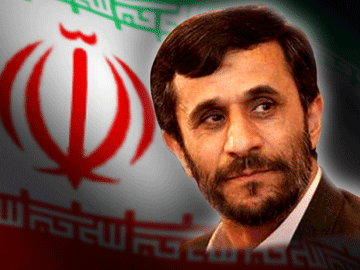
Iranian President Mahmoud Ahmadinejad
by William O. Beeman
The United Nations Security Council Resolution 1696 calling for Iran to suspend nuclear enrichment was passed on July 31, 2006 — nearly two years ago. Every sanction and demand placed on Iran since that time has been based on this Resolution (and its strengthened re-iteration, Resolution 1737 on December 23 of the same year).
Clearly after two years the Resolution and its follow-ups have not worked. Iran has not suspended its uranium enrichment activities, and indications this week are that it is not likely to do so in the future. The United States and its reluctant European allies obviously can not put enough pressure on Iran to cause it to abandon what the Nuclear Non-Proliferation Treaty — to which Iran (but not Israel, Pakistan or India) is signatory – provides as is its “inalienable rightâ€: peaceful nuclear development. As long as it does not violate Provision One of the NPT, namely the agreement not to develop nuclear weaponry.
Ironically, Security Council Resolution 1696 reaffirms the right to peaceful nuclear development. Since this Resolution has failed, it is worth looking at it again to examine its flaws.
It is first essential to understand the purpose of the resolution, which is stated clearly in points one and two of the Resolution in which the Security Council:
1. Calls upon Iran without further delay to take the steps required by the IAEA Board of Governors in its resolution GOV/2006/14, which are essential to build confidence in the exclusively peaceful purpose of its nuclear programme and to resolve outstanding questions,
2. Demands, in this context, that Iran shall suspend all enrichment-related and reprocessing activities, including research and development, to be verified by the IAEA
The IAEA Report on which this resolution was based, GOV/2006/14, was formulated on February 4, 2006, now nearly two and one-half years ago.
What is striking about both the IAEA Report and the UN Resolution is that both call on Iran to suspend its enrichment activities to “build confidence†that Iran is not violating Provision One of the NPT.
However, the world seems to have forgotten that the suspension of uranium enrichment was merely a means to that confidence building, and not an end in itself. The Bush administration now focuses on suspension of enrichment ratherthan confidence building. Since enrichment of uranium for nuclear fuel is clearly allowed under the NPT, this creates a paradox, and is the principal flaw in the Resolution. No one talked about alternative means of confidence building, though imaginative diplomacy would certainly have been able to craft such a provision that would have been acceptable to Iran.
More importantly, in two and one half years, a lot has taken place. Most notably, the United States National Intelligence Estimate was published in December 2007, in which it is clearly stated that Iran does not have an active nuclear weapons program. The IAEA continually reaffirms this estimate, and both Russia and China are in agreement as well.
If Iran does not have a weapons program, it is not in violation of NPT Provision One. There is no need for the confidence building called for in Resolution 1696, and therefore no need for suspension of Iran’s enrichment program.
The anger and public denial of the NIE on the part of President Bush, Vice-President Cheney and others in the Bush administration results from frustration with this situation. And no wonder, the basic reason for the Security Council Resolution has now been completely gutted. Bush officials spent hours and hours berating, jawboning and cajoling other nations, particularly European Allies, to go along with these Resolutions, and even to implement further sanctions based on them, now to no avail.
The deep irony in the situation is that American intelligence itself has vitiated the very reason for these actions.
Iranians see through this charade. For this reason they refuse to relinquish their treaty rights, and have determined to stand up to the United States. They have earned the anger of the Bush administration, but the admiration — often grudging — of much of the rest of the world.
It is certainly time to revisit the original Resolution 1696 to find new ways to guarantee to the world that Iran is in fact not building weapons. Since there is no evidence whatever that they are, this should be easy, if the United States will only stop trying to force Iran into the impossible choice of giving up an inalienable right in order to satisfy a rapacious U.S. administration bent on its destruction. Appeasement cuts both ways.
William O. Beeman is Professor and Chair of the Department of Anthropology
at the University of Minnesota, Minneapolis, Minnesota. He is President of
the Middle East Section of the American Anthropological Association. His
latest book, The “Great Statan†vs. the “Mad Mullahsâ€: How the United
States and Iran Demonize Each Other was published in April in an updated
edition by the University of Chicago Press.